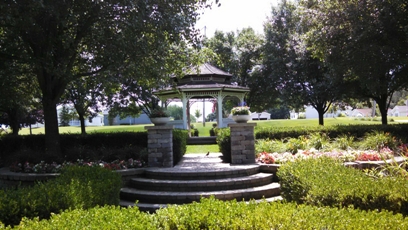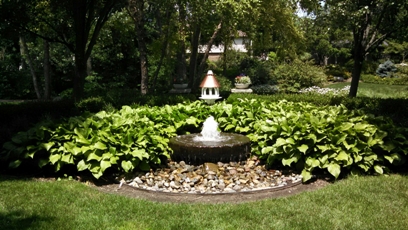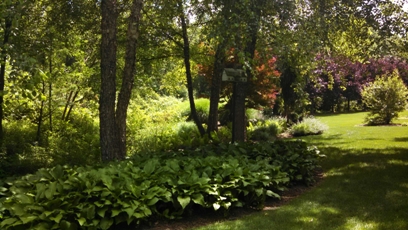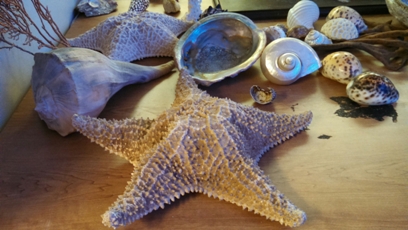Facilities and Classrooms
The Department of Biology is housed in the A. Paul Schaap Science Center, one of the nation’s premier undergraduate science education facilities. We use modern equipment to support innovative research and coursework.
A. Paul Schaap Science Center
Reflecting the College’s emphasis on outstanding undergraduate research, the Schaap Science Center is one of the nation's premier undergraduate science education facilities. It houses state-of-the-art research laboratories, hands-on classrooms and more. Learn more.
The A. Paul Schaap Science Center includes a variety of facilities for several different interests. From computer labs to biochemistry labs, our science center has all you need to launch your career in the sciences. We also boast many faculty/student research labs, an aviary, animal rooms and state-of-the-art environmental chambers.
Our department also has several spaces used for ecological research, community outreach and education:
- Nature preserve
- Greenhouse
- Herbarium
- Van Kley Museum
- Morningside Park
A personal visit to the biology department is the best way to see and understand our unique research and learning opportunities.
- Equipment
-
The biology department utilizes state-of-the-art equipment to perform research in cell biology, molecular biology, microbiology, ecology, genetics, neuroscience, behavior, physiology and bioinformatics. Students work independently or side-by-side with faculty to use this equipment for their research projects.
The biology department is extremely well-equipped to support faculty and student research and laboratory coursework. During the past five years the department purchased over $400,000 worth of new equipment including:
- Lab Products ventilated animal cage and waste removal systems
- Two light ceptometers
- SixPowerLab data acquisition systems
- LiCor photosynthesis system
- Intracellular electrophysiology recording system
- Cephied Real-time PCR
- Columbus Instruments Oxymax system
Departmental computing facilities are excellent.
In addition, students and faculty doing research in biology have access to a wide range of equipment and professional expertise in other science departments.
- Greenhouse
-
The 1,750 square-foot greenhouse has been a facility of the college and the biology department since 1972. It provides an environment in which experimental plants can be cultivated to allow student-faculty collaborative research, functions as a repository of a diversity of living specimens that are used in many botany and general biology courses, and provides an opportunity for the biology department to reach out to community in informal education of people of all ages.

- Herbarium
- Hope College Herbarium (HCHM) is located in room 3051 of the Schaap Science Center and holds about 8,000 specimens mostly from the West Michigan area with a rich collection of asteraceous plants. Our herbarium specimen images are online in the Symbio Portal.
- Morningside Park
-
To make reservations for Morningside Park, please contact Hope College Events and Conferences (616.395.7222).
Morningside Park is located on the corner of 32nd Street and Morningside Drive in Holland. It spans 1.6 acres and was donated to Hope College in 2007 by its former owners, Merle and Arloa Prins. The beautiful park features a gazebo (often used for weddings), a nice shed to store tools, and a quaint bridge over a stream. Along the shaded paths, there are many different kinds of plants used for a variety of medicinal purposes.
The park functions as a botanical garden for education, research and public display. Representative plants are being selected and planted to educate students (kindergarten through college) and the general public about plant diversity, evolution and relationship to human society.
During a first run through the park, beds were identified as areas in which medicinal plants could be planted as well as what native medicinal plants were already known to exist there.
Twenty-five species of plants were acquired and planted in Morningside Park. All 25 are known to have been used in the past or present in medicinal products, as remedies of Native Americans and/or in current drugs for treatments.
To learn more about the layout of Morningside Park, see the map of the park.
- Van Kley Museum
-
The Van Kley Science Museum exhibits a large collection of unique specimens and living animal species from all around the world. These species include small mammals, amphibians, reptiles and fish. Our residents come from a wide range of natural habitats that can drastically differ from each other. Some are native to North America and can be found in our very own
backyard, like our painted turtles, while others can be found in different parts of the world, like our chinchilla, Beaux, which is native to South America, high up in the Andes Mountains.The VanKley Museum is dedicated to the mission of providing a bridge between humans and the natural world by providing educational programs about the environment and natural world to Hope College and the community. By providing hands-on learning, it is our goal to foster curiosity and inspire stewardship of the natural world.
Programs hosted by the museum:
- Educational presentations
- Tours for groups of all ages, from preschoolers to senior citizens
- Hope College Summer Science Camp sessions
- Outrearch programs
Presentations at the science museum can be tailored to your group’s specific needs and educational focus. Past programs have included:
- Vertebrate group characteristics
- Habitat adaptations
- Animal classification
- Special presentations
The science museum is staffed and overseen by Nicole Larsen, the animal care specialist, and Emily Kindervater-Murphy, the museum director and director of labs. Nicole works alongside students, providing training and knowledge of animals residing in the museum. Students come from a variety of majors and backgrounds, including pre-veterinary, education and engineering! Students gain a variety of valuable experience in areas of their interests, providing pre-vet students with experience of handling exotic species, or education students learning how to teach about animal groups, or an art class coming in to practice sketching anatomy. Many of the students are biology majors in the pre-veterinary medicine or education programs at Hope College.
History of the Museum
The science museum dates back to 1904, when a room on the third floor of the then-new Van Raalte Hall was designated to house the collection of “curiosities” the college had collected since its founding in 1866. By 1915, this collection included weapons, shells, animals skulls, replicas of famous statues and over 5,000 specimens of moss. At the time, only a few community members took an interest in the museum.
When Van Raalte Hall was renovated after World War II, the museum was only accessible only by a narrow emergency staircase. The museum, at this time, had largely been forgotten. The crumbling collection was rediscovered by a group of students in the late 1960s, and in 1974 the biology and geology departments began moving items to the new Peale Science Center for safekeeping. This collection soon evolved into the science museum. When Peale was renovated and the current A. Paul Schaap Science Center constructed in 2004, the expanded Van Kley Museum was born.
Museum Contact Info
Schedule a tour today! The museum is available to visit by students and the community. The primary use of the Van Kley Museum is for Hope College students, faculty and staff and local elementary schools. However, the museum can also be visited by those not affiliated with Hope College. Reach out for more information on how to schedule your visit!
Admission to the museum is free.
Contact vankleymuseum@hope.edu
Nicole Larsen
Animal Care Specialist
616.395.6814
larsen@hope.eduEmily Kindervater
Museum Director
616.395.7722
kindervater@hope.eduThe museum is located at the A. Paul Schaap Science Center, room 1040.
- Nature Preserve
-
The Hope College Nature Preserve is a beautiful, 55-acre Beech-Maple forest located within the Western Michigan dune ecosystem. It is home to over 40 species of plants, 14 species of mammals, 40 species of birds and hundreds of species of arthropods. The preserve is located approximately five miles from our main campus and 1/4 mile from the Lake Michigan shoreline in Laketown Township, Allegan County.
 The preserve is invaluable to ecological research and teaching in the biology department
at Hope College. Each year several hundred Hope students utilize the site for hands-on,
course-based research. Additionally, several faculty members maintain long-term research
projects on the preserve that continue to foster student-faculty collaborative research
projects.
The preserve is invaluable to ecological research and teaching in the biology department
at Hope College. Each year several hundred Hope students utilize the site for hands-on,
course-based research. Additionally, several faculty members maintain long-term research
projects on the preserve that continue to foster student-faculty collaborative research
projects.The students and faculty of the Department of Biology are passionate about our responsibility to protect and manage the property wisely, both for the sake of the college’s academic program and because even small parcels of natural habitat are important repositories of biological diversity. Our species list grows yearly as we explore the property more fully. Unfortunately, it is clear that this property already suffers from many threats (see below), and that these will become more severe as suburban development increasingly isolates the site from larger parcels of natural habitat in the future. One of our most important long-term goals is to use the nature preserve to understand how small parcels of land can best be managed for the maintenance of their biological diversity and the ecosystem services they provide.
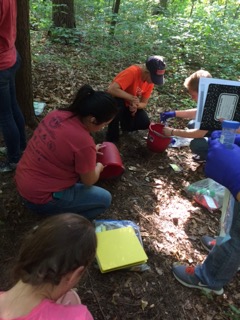
Visitation and Use Policy
Although the primary use of the nature preserve is for teaching and research by Hope College students and faculty, the preserve can be visited by those not affiliated with Hope College. However, because research projects are sensitive to disturbance, hunting, camping, horseback riding, off-road vehicle use, mountain biking and cross-country skiing are strictly prohibited. Similarly, collecting plants, timber (previously fallen or otherwise) or animals (including insects) is strictly forbidden. Violators of these policies have been and will continue to be prosecuted for trespassing.
Bird-watching and other non-destructive nature study by persons other than Hope College faculty and students are permitted, but only with written permission of the biology department. Any dogs accompanying visitors to the preserve must be on a leash. Persons interested in visiting to the property for such purposes should contact the Department of Biology at biology@hope.edu or call 616.395.7720.
This map shows the different walking trails, habitats, and research areas in the preserve:

Species Lists
The links below list species known to occur on the Hope College Biology Nature Preserve. Other species are undoubtedly present as well, and will be added to these lists as they are catalogued.
- Trees
- Shrubs
- Herbs and non-vascular plants
- Invertebrates (insects, mollusks, annelids, etc.)
- Amphibians
- Reptiles
- Mammals
- Birds
Threats
Because of its small size, relative isolation from larger parcels of natural habitat and close proximity to human dwellings, the nature preserve property faces a number of threats. Managing (and, hopefully, reducing) the impacts of these threats on the preserve’s biological diversity and the normal functioning of its communities is one of our major long-term goals. Specific threats include invasive plants, timber salvaging, use by horses and other domestic animals, and various other human disturbances.
A. Paul Schaap Science Center35 East 12th StreetRoom 2103Holland, MI 49423
workP. 616.395.7720
biology@hope.edu
